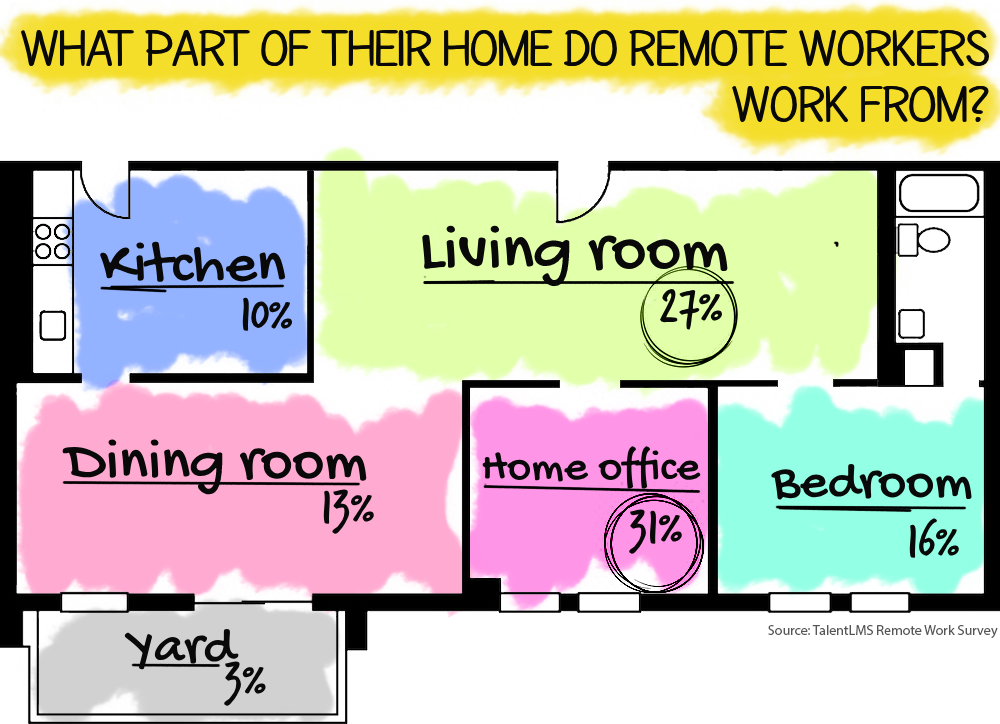
Ensuring that remote workers stay engaged and productive while working off-site can be a challenge. While for some it means greater focus and a sense of empowerment, for others it is isolating and unmotivating. It can be difficult to maintain a work culture and promote teamwork when everyone is dispersed.
However, research has shown that remote working can reduce employee stress as well as increase productivity – thanks to things like no commuting, a more ‘relaxed’ environment, and fewer distractions. Remote working really is a win/win situation for both employer and employee, at least when it’s done right! A common cause for concern is that remote workers can become disconnected from their employer due to the lack of face-to-face contact.

A recent survey from Workplace by Facebook titled Deskless Not Voiceless: Communication Works, has shown that remote workers find it difficult to build work relationships. What was particularly interesting about the survey was that 86% of remote workers felt connected to their colleagues, but only 14% felt connected to the company HQ and just 3% had any communication with the C-Suite. This can be demoralising for remote workers because it may result in fewer opportunities for promotion and rewards. So how do we bring our remote workers back, not into the physical office but into the company psyche?
Communication tools are the remote worker’s best friend
Technology often gets a bad reputation for isolating us from one another, but in many ways technology is what enables us to come together. That being said, not all communication technology is equal! Composing an email is a much more isolated and time-consuming task than firing off instant messages into a chat box where other members can respond in real-time. One particularly popular communication tool is Slack. Slack allows you to organise your conversations into channels and these can be set to private if needed. You can see when members are online and tag them in conversations to quickly get their attention. The platform is robust enough to send most kinds of files (such as images, videos, GIFs, PDFs) which makes it easier for remote workers to collaborate on projects. It is the speed of interaction that communication tools like Slack support which makes it so effective at keeping remote workers in the loop. There are many alternatives to Slack, of course, such as Microsoft Teams, Hive, or Google Hangouts.
Make time for face-to-face communication
Instant messaging definitely has its place, however face-to-face communication is unbeatable when it comes to building real relationships. The ideal way to do this remotely is with videoconferencing. There are multiple ways to achieve this, from FaceTime to Zoom to Skype and beyond. We would advise you to schedule in either weekly, fortnightly or monthly face-to-face meetings with your remote workers, depending on the work you do. By being able to see someone’s face, identify facial cues, and speak in real-time, video conferencing can humanise communication. Once you see their face pop up on your screen and they, in turn, see you, all sense of distance is instantly removed. This can also be a real godsend for those moments when you would like your remote worker to be available in a meeting to answer a couple of questions but that’s just not possible. Using videoconferencing to allow teams to touch base – such as with an informal ‘coffee and a chat’ session that lets them catch up on the everyday personal news that fuels human interaction – with help to keep teams cohesive while apart.
Don’t forget to give remote workers praise!
The only way remote workers can feel a part of the company is by being treating them as such. We can all be guilty of falling into the terrible habit of out of sight, out of mind, but you know that if your remote workers suddenly dropped in productivity, you would be on their case! So take the time to praise them for the good work they do. While you’re not likely to pass by them at the water cooler, the extra effort of reaching out to remote workers will be well worth it. After all, you want your remote teams to stay motivated and the best way to do that is by giving them a sense of pride in where they work. Include them in shoutouts in the company newsletter, make sure their name is in the hat for competitions, and give them the heads up on new opportunities that they may otherwise miss out on.
The key to making remote working a success long-term is to remove ‘remote’ from the equation as much as possible. It can be a challenge for on-site employees to treat remote workers the same as the colleagues they bump into every day, but if you want your workforce to thrive while reaping the benefits of remote working, then you need to set the standard from day one. It is the responsibility of those at the top to create a culture of inclusivity for every member of the workforce. Remote working is going to become a permanent option for most teams; this is a cultural shift that is unlikely to roll back. Your best bet as an employer is to embrace this change for all the benefits it brings – take the necessary steps and get ready for the future!
About the author
 Scarlet Bierman
Scarlet Bierman
Scarlet Bierman is a content consultant, commissioned by Enterprise Ireland to fulfil the role of Editor of the New Frontiers website. She is an expert in designing and executing ethical marketing strategies and passionate about helping businesses to develop a quality online presence.
Recent articles

Founder Perspectives: Lessons From Building Businesses In Sustainability

Tech Startups In The Age Of AI: Alumnus Paul Savage On Speed, Quality & Risk

Fourteen Startup Founders Graduate From Phase 2 Of New Frontiers In Tallaght

Eleven Founders Graduate From New Frontiers In The Border Mid-East Region

Laying The Right Groundwork Helps Startups Prepare For Export Success

Startup In Dublin: Learn More About New Frontiers On TU Dublin’s Grangegorman Campus

Michael Furey On The Success Of Ronspot: “The Most Important Thing Is Research”

 Scarlet Bierman
Scarlet Bierman
